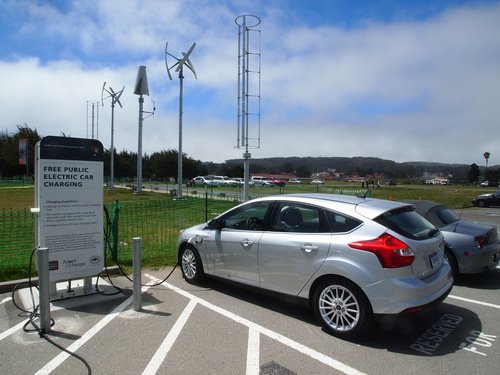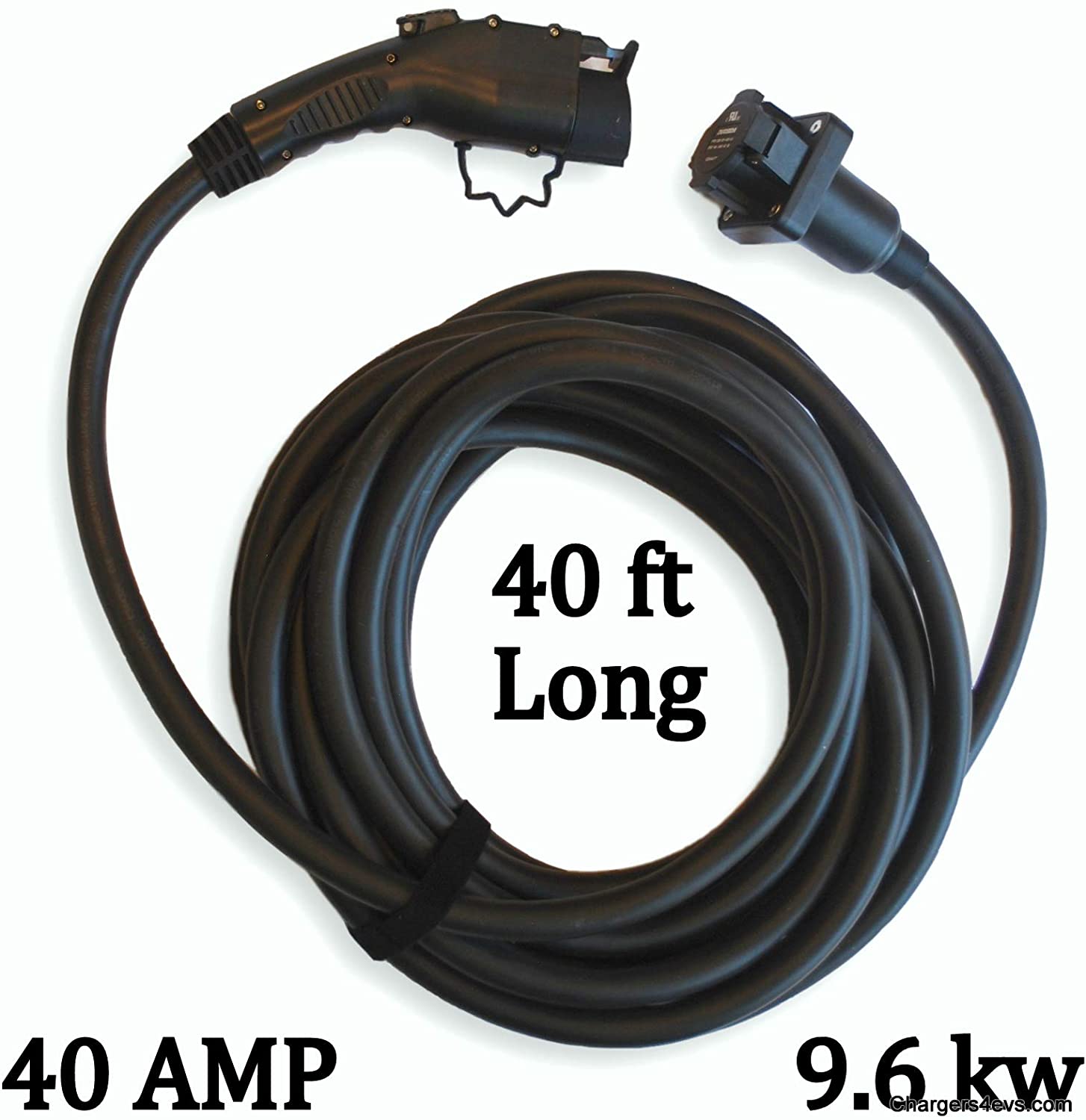Last Update: April 14, 2017

Because electric cars run on electricity, any power outlet is a refueling station, and the electrons can come from any source including solar power or wind turbines. Can't do that with a gasoline car. Unfortunately at 120 volts the recharge rate is pretty slow, but at least if you're stuck you can almost always find a power outlet. See Electric car charging speed and effective trip speed on road trips for more information on charging rates.
Like a gasoline car, you drive an electric car and occasionally have to refuel it. In a gasoline car refueling is done at a gasoline station, with an electric car it's done at a charging station. They're essentially the same act. You attach a cable, or hose, to the car, to refill the energy storage. Instead of liquid flammable fuels you're using electricity.
While electric cars run on electricity, they cannot be plugged directly into regular power outlets. Instead a charging station, or electric vehicle service equipment (EVSE), is used instead. EVSE's have a special purpose power connector with safety procedures to prevent you driving away with the charging cord connected, or from being electrocuted in the rain. Car makers provide a portable EVSE along with the electric car, so you can plug into any regular power outlet.
Electric cars take a "long time to recharge" because of the physics of recharging battery packs. Battery packs store electricity as chemical reactions, which aren't the sort of thing one can rush. See Why does charging a battery take so long? Hint: reversible electrochemical reactions cannot be rushed
Some electric cars offer fast charging that runs at a much higher power level. Regular electric car charging runs at about 6 kiloWatts, resulting in a 3-4 hour recharge time from empty. That's for the 24 kiloWatt-hour cars with 80 mile range. Now that 200+ mile range EV's are becoming possible, a complete recharge might take 8-10 hours at 6 kiloWatts assuming a 60 kiloWatt-hour pack. Fast charging runs at 50 kiloWatts or in the case of the Tesla Motors Supercharger at 120 kiloWatts. By contrast a regular compact fluorescent light bulb runs at about 30 Watts, and the typical hair dryer at 750 Watts. See EV DC Fast Charging standards – CHAdeMO, CCS, SAE Combo, Tesla Supercharger, etc
Why haven't the car companies built affordable longer-range electric cars? Tesla Motors proved beyond any doubt it's possible to build electric cars with 260 miles range, or more. In April 2017 they released EPA ratings for the 100 kiloWatt-hour Model S, which is rated for 335 miles of range. The limiting factor has been battery pack cost. Until 2017, longer range electric cars were also very expensive. Yet, Tesla Motors has been extremely successful within the luxury car market, outselling most of the luxury car brands.
GM is currently selling a 238 mile range Chevy Bolt EV for $37,500 base MSRP. Nissan has promised a Leaf with a similar range. Renault, BMW, and other automakers have begun selling larger EV's with battery packs for more range. It's thought the automakers who haven't done so yet, will start selling EV's with more range. Clearly a price/technology breakthrough has occurred allowing many automakers to offer longer range EV's at a more affordable price. The 2017 and 2018 model years will be seen as a tipping point.
Want to take a Road Trip with an electric car? Don't look at "range" as the primary factor. Look at the miles of range gained per hour of charging. A 600 mile trip will require multiple charging stops, even with a Tesla. The refueling speed is the major differentiator between gasoline and electric and is what separates the different electric brands from each other. At a 6 kiloWatt charge rate, the 24 miles range gained per hour of charging turns into a 15 mile/hr trip speed. At a 130 kiloWatt, the effective trip speed is more like 55 miles/hr. See Electric car charging speed and effective trip speed on road trips
It's not always necessary to use fast charging. Sometimes excruciatingly slow charging is the correct charging speed. For example, if you're on a 2 week trip with your car parked in airport long-term parking it doesn't make sense to leave the car connected to a 6 kiloWatt charging station. A 120 volt power outlet is just fine, and is much less expensive for the airport to offer. Instead what's needed is to use the correct charging rate for the scenario you're facing. See What electric car charging rate do we need at home, at the office, on road trips, at airports, or elsewhere?
Electric cars work fine in the rain. The car makers hire smart engineers who know how to weather-proof the electrical system so that rain won't get inside the wiring. Charging connectors have been designed to be safe in the rain. Don't worry, be electric.
The best tool for finding charging stations is the PlugShare app for smart phones. They've got data from all the charging networks. It's constantly updated, and in many cases other PlugShare users report on the current status of each charging station so you can know of problems before driving across town only to find the station is broken. See Smart-phone apps for finding electric car charging station networks and Known electric car charging networks around the world
While electric car purchase prices are higher than equivalent gasoline cars, electric cars are cheaper to own. Electricity is a cheaper fuel than gasoline, meaning electric car owners save lots of money on fuel costs. Depending on how much they drive, the savings can be enough to pay for the car. See A brief study of EV Ownership Economics



